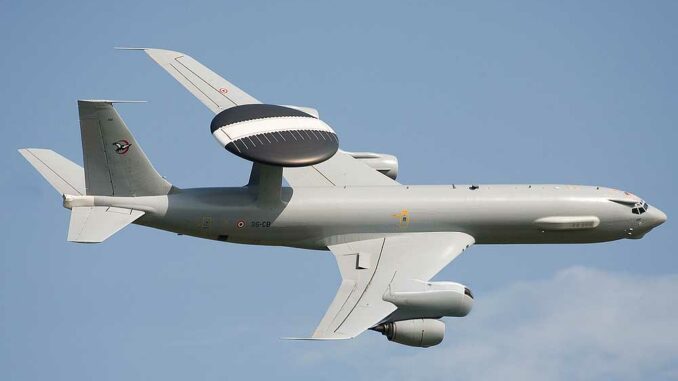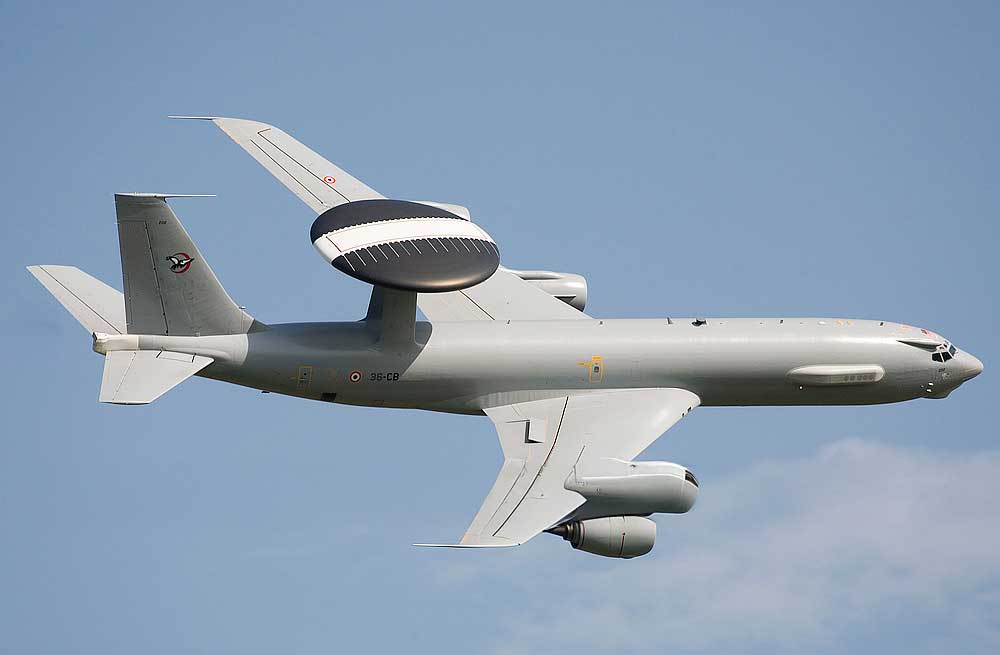
From October 6 to 7, 2025, the AAE conducted a full-scale RESCO mission in Corrèze simulating the ejection of an AWACS crew, testing maneuvers, C2, and interoperability.
Summary
Between October 6 and 7, 2025, the French Air and Space Force orchestrated a large-scale combat search and rescue mission in Corrèze as part of “Volfa” 25. The scenario was based on the ejection of an AWACS crew in a hostile area and the implementation of a complete RESCO chain: location, securing, extraction, and evacuation to a staging area. This sequence was part of a national joint and allied exercise involving around 50 aircraft and more than 1,000 personnel, spread over a dozen French bases from September 22 to October 10. Beyond the spectacular dimension, the operational interest was significant: testing the CDAOA‘s C2, the integration of effects (air defense, electronic warfare, resupply), interoperability with NATO partners, and logistical robustness (forward support points such as Périgueux-Bassillac). The operation validated key procedures for extracting a large crew under threat and in complex terrain, while capitalizing on feedback for high-intensity engagements.
Operation RESCO at the heart of “Volfa” 25
The scenario and pace of action
The core of the maneuver was simple and demanding: an AWACS in distress, an ejected crew, and a “hostile” area to search, secure, and clear. Scheduled to last 48 hours, the action was conducted on the Corrèze plateaus, mobilizing air and ground resources to locate, protect, and then extract the survivors within a tight timeframe. The objective: to carry out, under realistic conditions, the entire RESCO chain, from first contact to evacuation to a staging area.
The choice of an AWACS crew as a test case
Choosing an AWACS is not insignificant: its C2 value makes it a priority target and its crew, which is larger than that of a fighter jet, complicates recovery (multiple drop points, dispersion, synchronization of extractions). Perimeter security and air cover constraints become crucial, as do radio coordination, distress signal management, and air traffic deconfliction.
Resources deployed and airmobile maneuver
Extraction vectors and air support
The extraction component relied on helicopters dedicated to RESCO (Caracal H225M type), capable of landing/hoisting at night, at very low altitude, and under threat. This component was coordinated with tactical transport aircraft (A400M, C-130, CN-235) for transporting teams, resupplying support points, and simulated medical evacuation. Images taken at Périgueux-Bassillac airport show a CN-235 on evacuation rotation and two Caracals providing links with Corrèze, illustrating the “field – support point – base” extraction loop.
Protection, air bubble and resupply
Around the RESCO “package,” the protective bubble combined fighter coverage, friendly ground-to-air combat, and logistics flows. “Volfa” 25 served as a laboratory for low-altitude resupply, day and night, and dynamic targeting missions piloted from the command center, improving the permanence of the bubble and responsiveness to evolving threats. The challenge was to maintain the RESCO window long enough to regroup, provide medical care, and extract all survivors, despite tactical uncertainty.
Joint and combined coordination
CDAOA integration and multi-field effects
Led by the CDAOA, “Volfa” 25 is designed to aggregate simultaneous effects: local air superiority, jamming, dynamic targeting, friendly ground-to-air defense, and flight synchronization. Planning integrated the dispersion of resources across multiple bases, in line with agile deployment concepts, while maintaining a consistent situational picture for the benefit of the RESCO chain. This orchestration is crucial to avoid saturation of the combat volume around the extraction.
NATO partners and the distribution of roles
The 2025 edition brought together crews and aircraft from several NATO allies, including Italian Tornados, Greek F-16s, a Canadian CC-130, and a British A400M. This diversity made it possible to test interoperability under realistic conditions: communications, support procedures, logistical relays, and intelligence sharing, which are essential when RESCO is carried out under pressure.

Tactical challenges specific to AWACS rescue
A high-value target and a dispersed crew
An AWACS provides air surveillance, control, and early warning; its loss immediately degrades situational awareness and the conduct of operations. Rescuing its operators is therefore critical, but post-ejection dispersion complicates location and requires a rapid ramp-up: fighter patrols, reconnaissance, radio relays, and the gradual deployment of extraction helicopters once the threat is contained.
The ground-to-air threat and sensor management
In bocage terrain and moderate relief, the ground-to-air threat remains a key factor. It requires a combination of suppression/avoidance, very low routes, speed, and relative electromagnetic stealth (emission discipline). The sensor-effects loop (radars, data links, optronic pods) supports the detection of survivors, the tracking of ground teams, and the securing of the extraction zone. The specific aim of “Volfa” 25 is to refine these sequences in a congested sky and under time constraints.
Field anchors and theater logistics
Forward support points in Dordogne and Corrèze
Conducting a credible RESCO requires forward support points for fuel, medical care, and crew reconditioning. In “Volfa” 25, Périgueux-Bassillac airport played a logistical role, while the prefecture informed the public that maneuvers would continue in Corrèze until October 7, reminding them of safety instructions. These elements confirm the “training ground – support point – main bases” architecture specific to high-intensity operations.
Air traffic and ZRT/ZDT
The scale of the exercise led to the creation of temporary restricted areas and specific corridors affecting several aerodromes according to defined slots. This system limits the impact on general aviation while providing crews with a realistic environment, with vertical and lateral deconfliction and coordinated activation constraints.
The place of “Volfa” 25 in high-intensity preparation
The training-deterrence continuum
“Volfa” 25 is the cornerstone exercise in AAE preparation, aligned with the ramp-up of NATO training in contested space. The 2025 edition took place from September 22 to October 10, at 12 bases, with approximately 50 aircraft and more than 1,000 personnel. It focused on low-altitude refueling and dynamic targeting, complementing the deterrence sequences conducted the previous week. This continuum illustrates the culture of preparedness “from rescue to combat” to major crisis management.
Key lessons learned
Among the key lessons learned were the need to further standardize multi-site collection procedures for large crews; the importance of maintaining the protective bubble (range, refueling cycles, fighter relief); the validation of advanced logistics relays; and the optimization of data links to streamline the shared tactical situation for the benefit of ground teams and extraction vectors. These areas will feed into the next cycles of firing, tactical flight, and RESCO training.
The operational value of a demanding case study
A concrete gain for the RESCO chain
Staging an AWACS ejection forces the chain to deal with a complex case: multiple survivors, dispersion, persistent threat, time pressure. Joint and combined forces coordination, the use of forward support points, and the combined use of tactical transport and extraction helicopters provide superior training value that can be immediately exploited in operations.
A path of continuous improvement
The next step will focus on further integration of cyber and electromagnetic effects, simulation of denser ground-to-air threats, and extension of the maneuver to larger theaters with shorter RESCO windows. The combination of the expertise validated on “Volfa” 25 and the experience gained in NATO exercises will further accelerate the AAE’s operational readiness.
War Wings Daily is an independant magazine.